The Explore Scientific 52 ° eyepiece line went on sale in mid-2018. It is represented by eyepieces with a focal length of 3, 4,5, 6,5, 10, 15, 20, 25, 30 and 40 mm.
In my opinion, the greatest interest for observing the planets and the moon is represented by the values of 3 mm, 4,5 mm and 6,5 mm – they are made according to the “negative doublet + Plossl” scheme.
Explore Scientific LER 52 ° 6,5 mm, 1.25 “(AR) eyepiece came to my test.
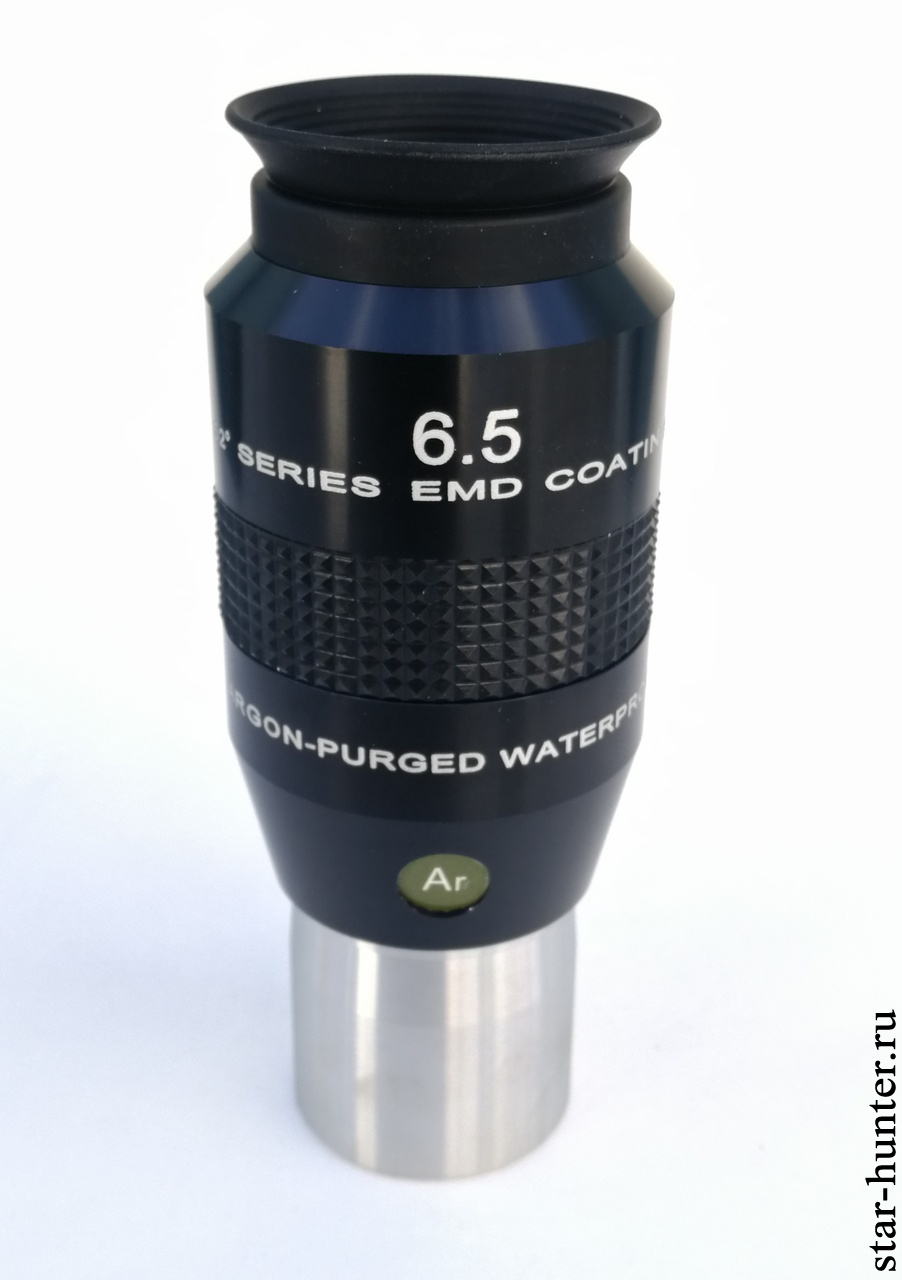
Specs
Item Number: EPWP5265–01
Type: parfocal
Coatings: EMD (Enhanced Multi-Layer Deposition) on all lens-to-air surfaces
Lens elements/ groups: 6 Elements in 3 Groups; Edge Blackened
Field of view: 52° (measured – 51,2°)
Focal length: 6,5 mm
Eye relief: 15,9 mm (measured – 16 ±1 mm)
Field Stop Diameter: 5,9 mm
Barrel Size/Type: 1.25″ O.D. / Double Taper
Filter Thread Fits Standard 1.25-inch Dia. Thread in Filters (1.125-inches x 42 TPI) (measured thread diameter – 28 mm)
Waterproof O-Ring Sealed Argon Gas Purged; Tested Under 1 Meter of Water for 30 Minutes
Eyecup: Removable Flip-Down Style Soft Silicone Rubber
Materials: Optical Glass; Aluminum; Steel; Silicone Rubber
Length: 103.5mm (measured – 104 mm)
Width: 43 mm (measured – 43 mm)
Weight: 226,8 grams (measured – with protective covers 227 grams, withot protective covers 220,7 grams)
Markings: Laser Engraved: Focal Length; Series; Serial Number; Brand
Country of origin: China for Explore Scientific (Germany)
The eyepiece comes in a beautiful cardboard box. The kit includes an eyepiece, 2 plastic protective covers and a dustproof bag made of soft fabric. The eyepiece is packed reliably, you can not worry about its safety during shipment.
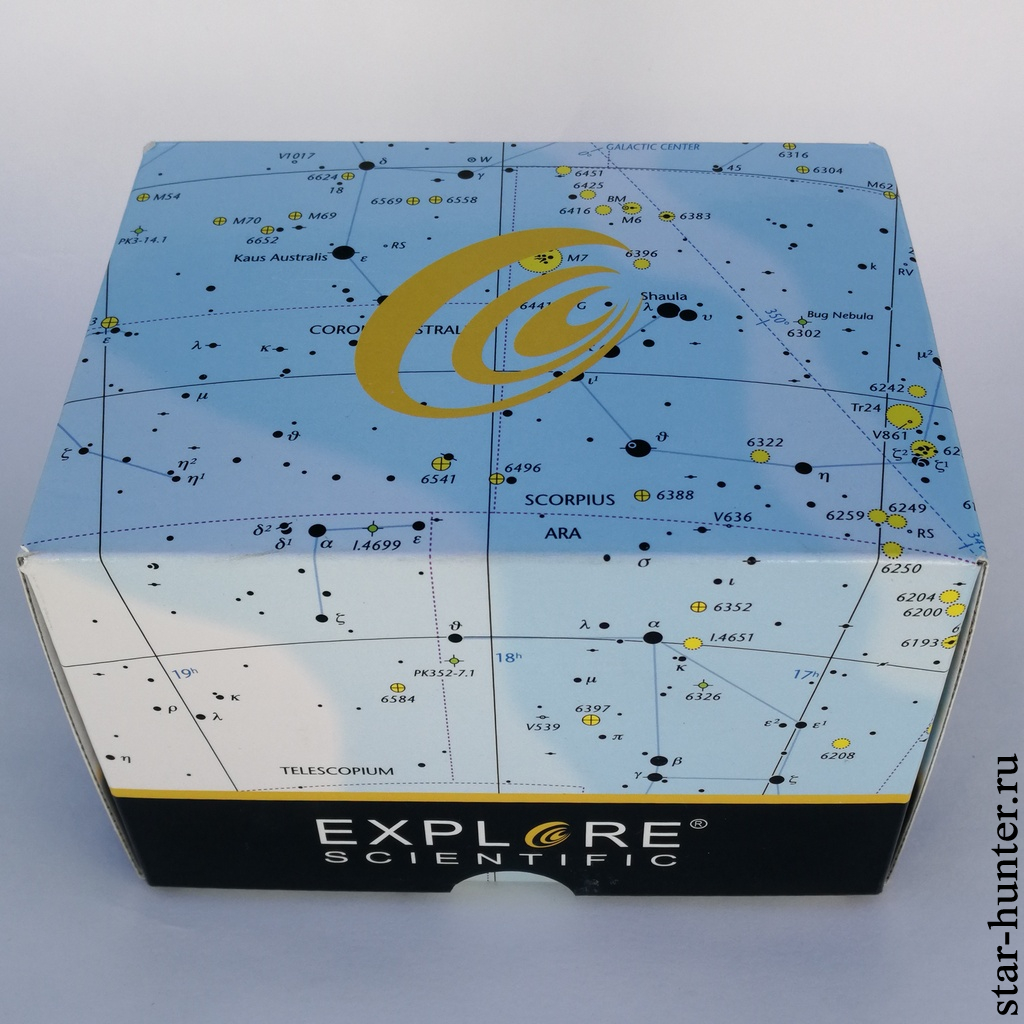

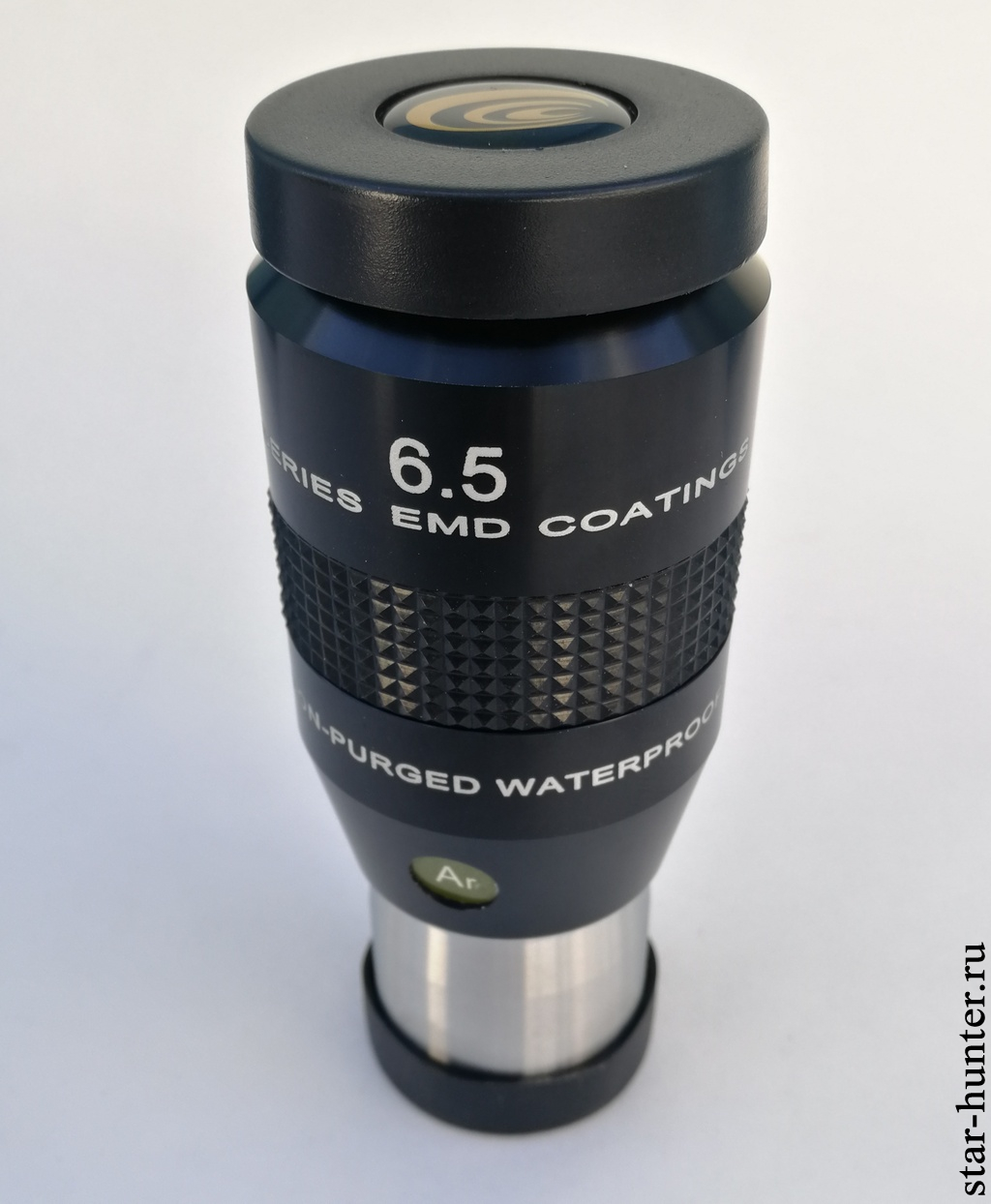
The eyepiece body is metal, of rubber only a ribbed ring in the middle of the case, as well as a soft eyecup.
The eye lens is convex with a diameter of 19 mm, recessed into the body by 2.7 mm. Reflex from the eye lens is green and dull colorless. No scratches or damage to the surface. The measured pupil extension was 16 ± 1 mm – it is comfortable to observe with glasses with a folded eyecup.
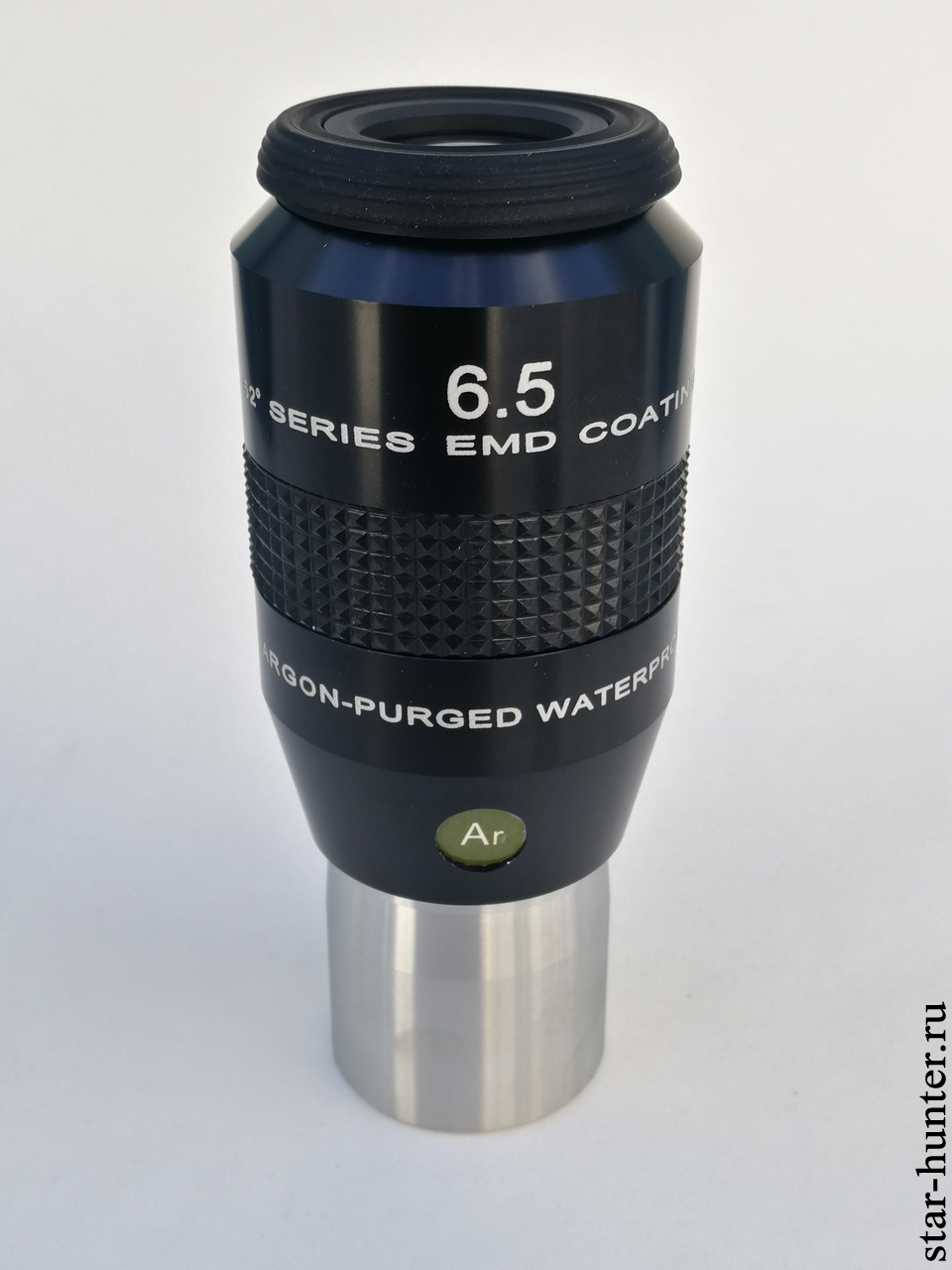
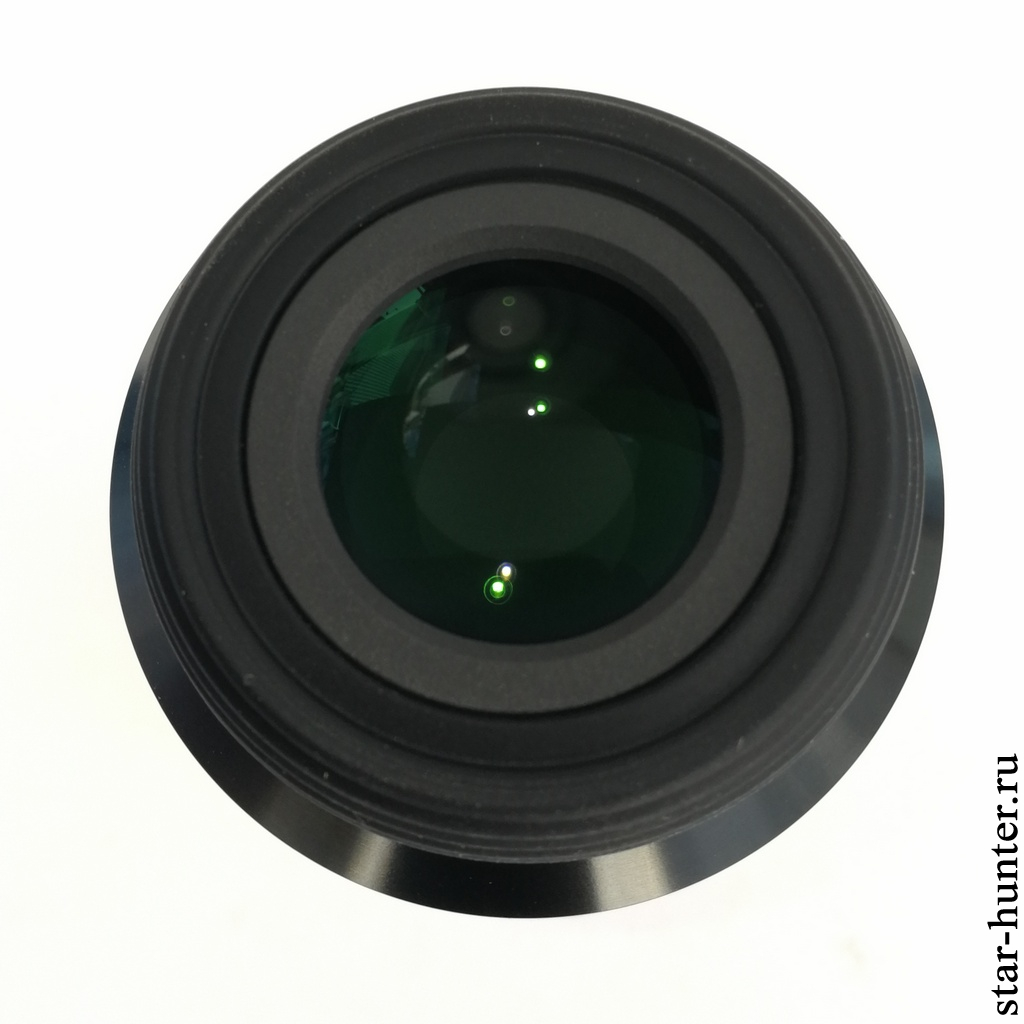
The front lens is a two-lens gluing with a concave outer surface, a light diameter of 10 mm. Reflex at a right angle is colorless, at an angle – green. No scratches or damage.
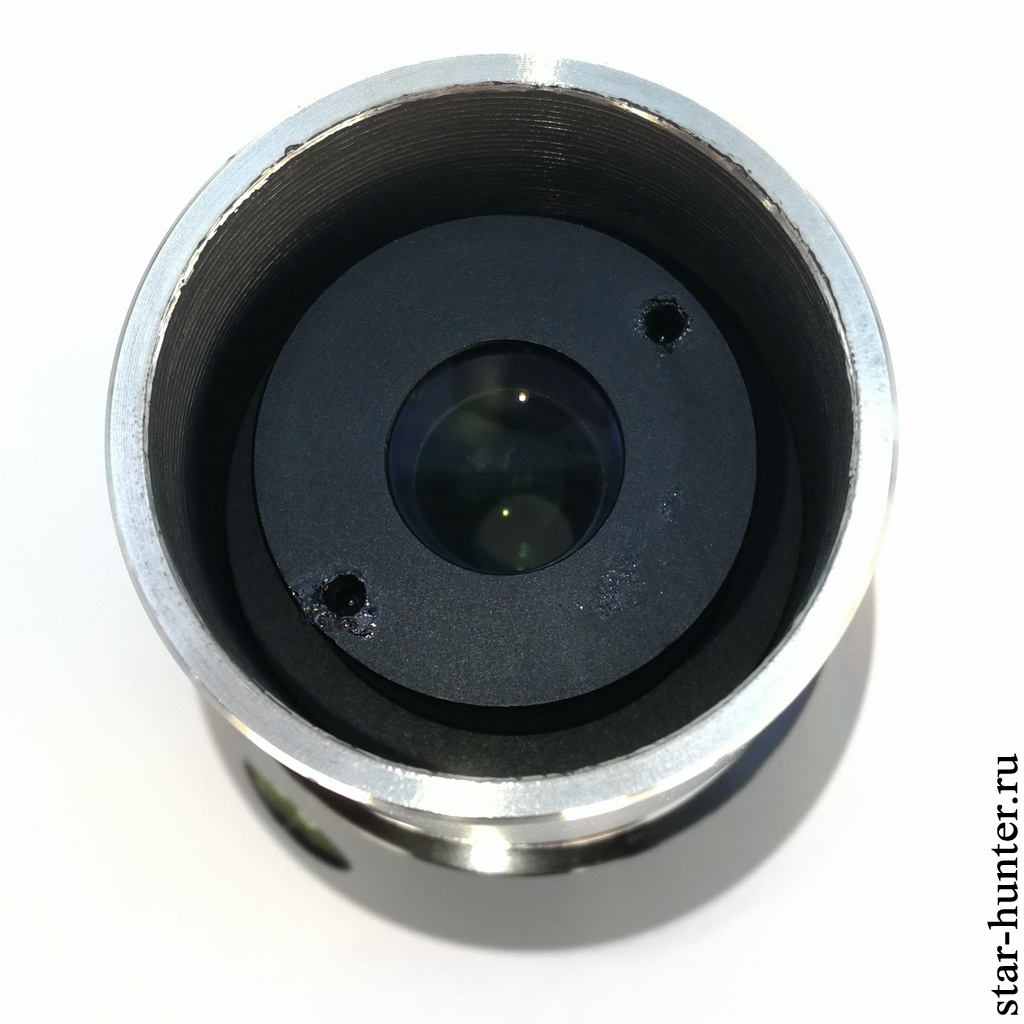
When checking the eyepiece in the light, color distortion or re-reflection was not detected.

Explore Scientific LER 52° 6,5 mm, 1,25″ (AR) eyepiece was tested in conjunction with the Levenhuk Ra R66 ED Doublet Black (66 mm aperture, 1:6 relative aperture) for Venus, the Moon, and ground objects. The picture throughout the field of view is sharp, there is no field curvature. No parasitic reflex detected. The edge of the diaphragm is clear, without colors. Dust and debris are not visible. There is a significant cushion-like dystoria – when approaching the edge of the field of view, the image is stretched (see photo below).
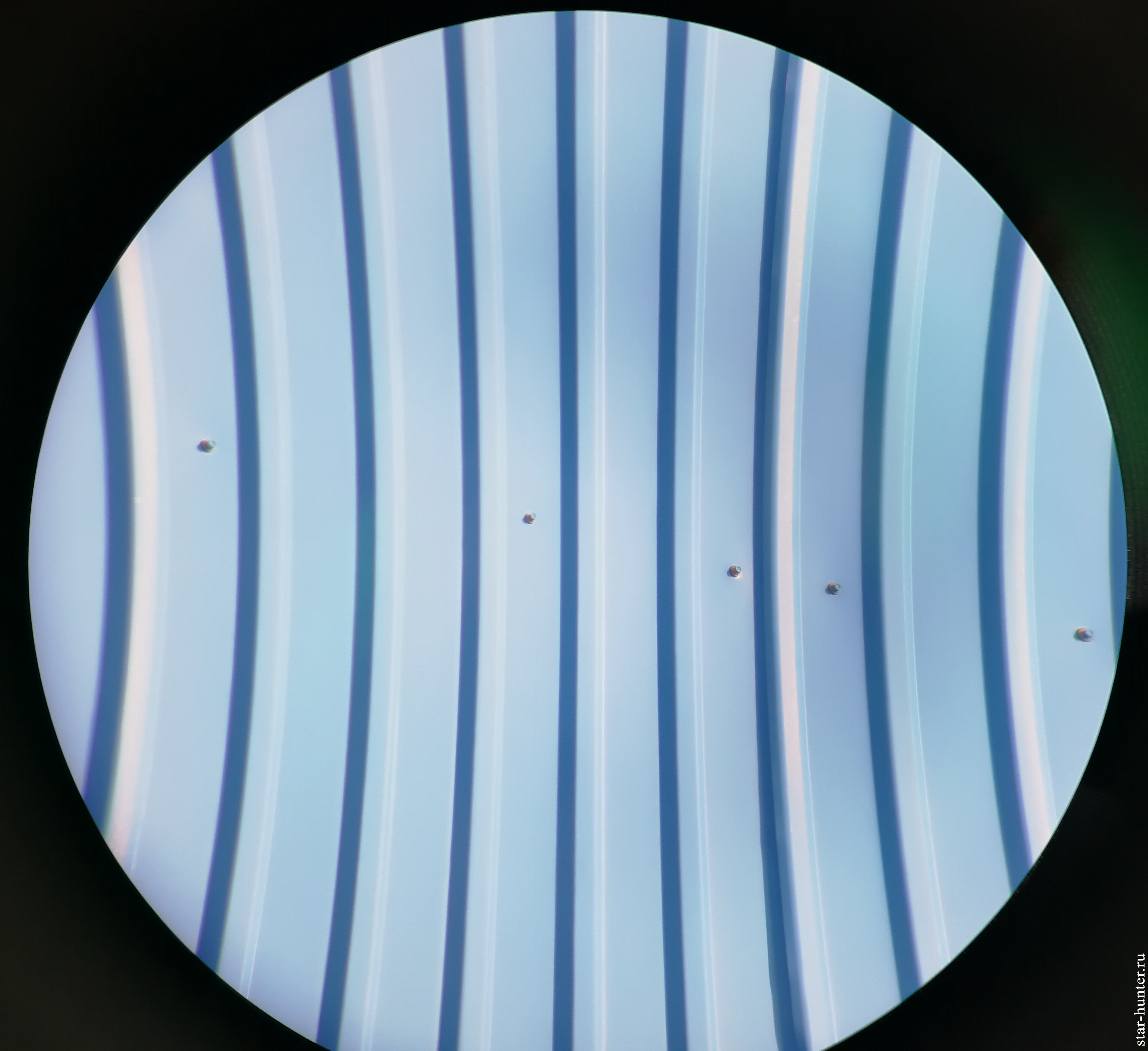
Summary
In principle, I liked this eyepiece – a contrasting image, a large pupil relief, excellent field sharpness, good workmanship. Suitable for use even in fast telescopes. On the downside, I’ll take strong distortion – it can turn out to be annoying when “walking” on the Moon and ground-based observations.
On telescopes with a relative aperture of 1:10 (refractor, Maksutov-Cassegrain, Schmidt-Cassegrain), the Explore Scientific LER 52° 6.5 mm eyepiece will provide 1.5*D magnification, and with a relative aperture of 1:13,3 (Maksutov-Cassegrain) 2*D magnification. These magnifications are commonly used in lunar planetary observations. In telescopes with a relative aperture of 1:5, the eyepiece can be used when observing compact planetary nebulae with high surface brightness ( 0.76*D magnification). You can read about choosing the optimal magnification in my article “Choosing Eyepieces. A Guide on Choosing The Right Telescope Eyepieces”.
I thank “Levenhuk” company for the eyepiece provided for testing.
Any questions? Ask me!
I have a telescope Bresser MC152/1900 with f/12.5 (Makutov-Cassegrain).
I am looking for a good EP to watch the planets, specially Jupiter and Saturn.
Would you say that this EP Explore Scientific LER 52° 6,5 mm, is a good match?
Thank you, Regards
Rui
Hi! I recommend to see at Celestron X-Cell LX 7 mm. It has lower distorsion at bigger field of view.
ES LER 6.5 mm excellent on central part of FOV, but it has very strong distorsion – it is not good for lunar and solar observations.
Ждем обзора 66мм ED Levenhuk!